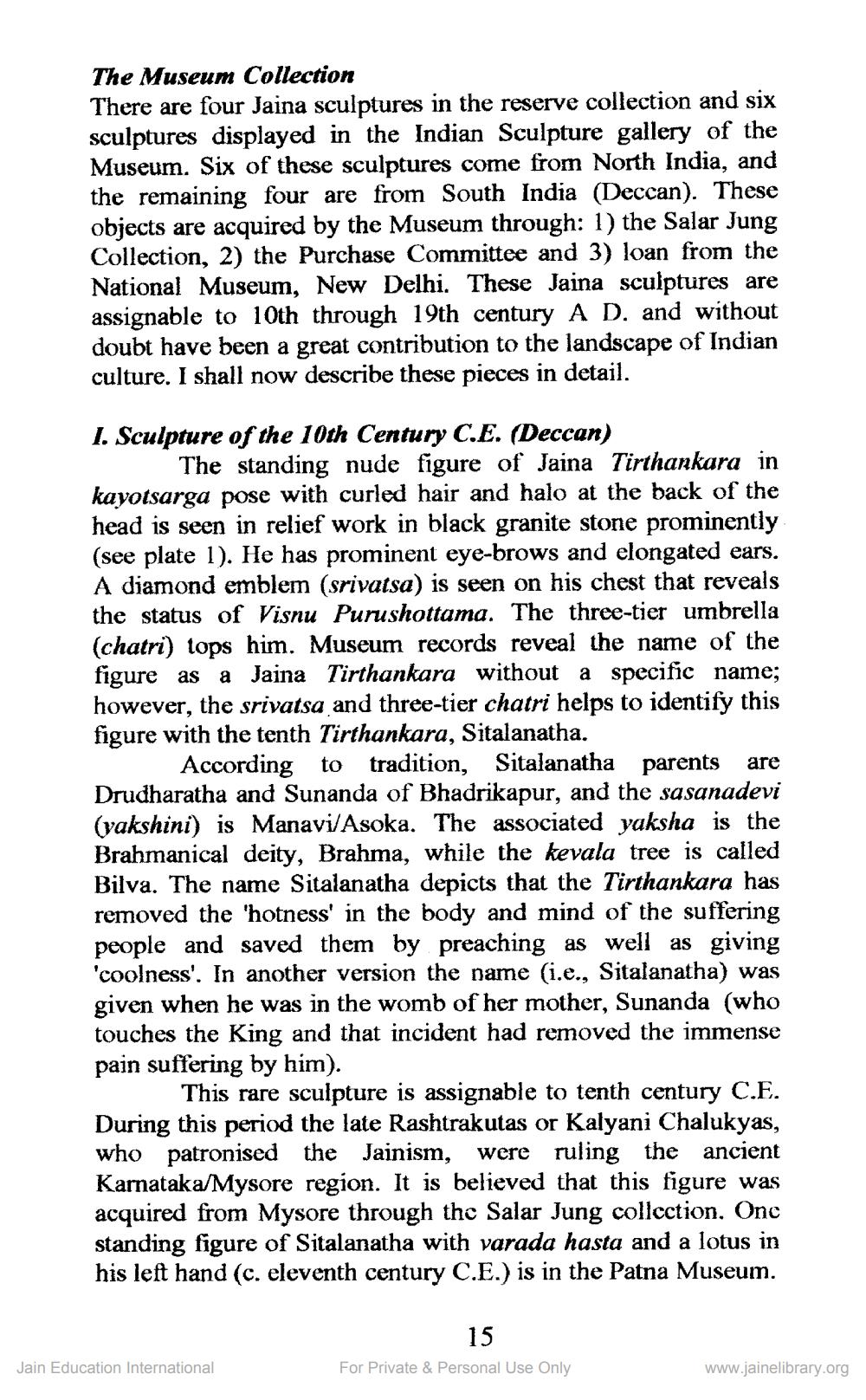________________
The Museum Collection
There are four Jaina sculptures in the reserve collection and six sculptures displayed in the Indian Sculpture gallery of the Museum. Six of these sculptures come from North India, and the remaining four are from South India (Deccan). These objects are acquired by the Museum through: 1) the Salar Jung Collection, 2) the Purchase Committee and 3) loan from the National Museum, New Delhi. These Jaina sculptures are assignable to 10th through 19th century A D. and without doubt have been a great contribution to the landscape of Indian culture. I shall now describe these pieces in detail.
1. Sculpture of the 10th Century C.E. (Deccan)
The standing nude figure of Jaina Tirthankara in kayotsarga pose with curled hair and halo at the back of the head is seen in relief work in black granite stone prominently (see plate 1). He has prominent eye-brows and elongated ears. A diamond emblem (srivatsa) is seen on his chest that reveals the status of Visnu Purushottama. The three-tier umbrella (chatri) tops him. Museum records reveal the name of the figure as a Jaina Tirthankara without a specific name; however, the srivatsa and three-tier chatri helps to identify this figure with the tenth Tirthankara, Sitalanatha.
According to tradition, Sitalanatha parents are Drudharatha and Sunanda of Bhadrikapur, and the sasanadevi (yakshini) is Manavi/Asoka. The associated yaksha is the Brahmanical deity, Brahma, while the kevala tree is called Bilva. The name Sitalanatha depicts that the Tirthankara has removed the 'hotness' in the body and mind of the suffering people and saved them by preaching as well as giving 'coolness'. In another version the name (i.e., Sitalanatha) was given when he was in the womb of her mother, Sunanda (who touches the King and that incident had removed the immense pain suffering by him).
This rare sculpture is assignable to tenth century C.E. During this period the late Rashtrakutas or Kalyani Chalukyas, who patronised the Jainism, were ruling the ancient Karnataka/Mysore region. It is believed that this figure was acquired from Mysore through the Salar Jung collection. Onc standing figure of Sitalanatha with varada hasta and a lotus in his left hand (c. eleventh century C.E.) is in the Patna Museum.
Jain Education International
15
For Private & Personal Use Only
www.jainelibrary.org




